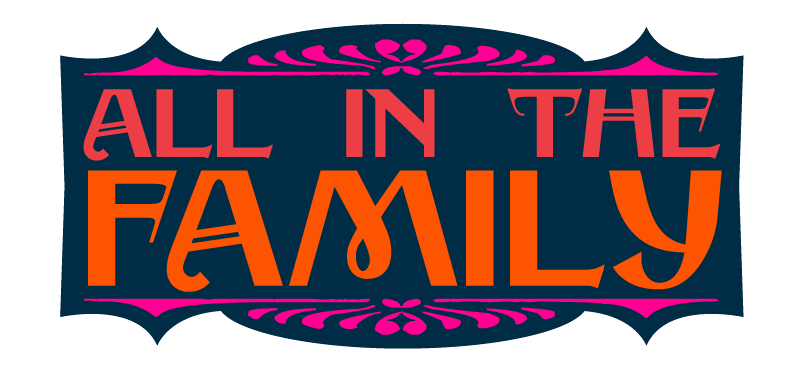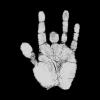
”DeadBase" author Stu Nixon found the task of chronicling every note in the Grateful Dead's musical trajectory so rewarding, he did it 19 times! Here we find out what the ultimate edition, "DeadBase 50," features (spoiler alert, A LOT, this one's a hefty 992 pages), and just how Nixon managed to make it to every show in '85.
DeadBase has been out of print for quite some time, but we hear there’s a new version out called DeadBase 50. Can you tell us about the new book?
Yes! Out of print for over a decade (DeadBase XI was released in 1999), DeadBase 50 brings the entire Grateful Dead repository of information up to date. From the first performances of the band in 1965 under their original name the Warlocks through the “Fare Thee Well” 50th anniversary shows in 2015, DeadBase 50 contains not only the details of the Grateful Dead’s live performances and recordings, but also includes all the solo bands of Jerry Garcia, Bob Weir and Phil Lesh.
DeadBase 50 clocks in at a whopping 992 pages, and includes 409 pages of concert set lists (DeadBase, GarciaBase, WeirBase, PhilBase, NedBase, The Other Ones, The Dead and Furthur), 206 pages of concert statistics, 176 pages of show reviews and essays, 127 pages of discography, 41 pages of photos and more!
In a nutshell can you give us a little history of DeadBase?
First published in 1987, DeadBase was the brainchild of three veteran Dead Heads: John W. Scott, Mike Dolgushkin and myself. We met through the Grateful Dead’s publicist and biographer, Dennis McNally. All three of us contributed lists of Grateful Dead concerts we had amassed over the years and added information from a variety of sources, including many contributors from online communities such as usenet and the WELL, along with Dick Latvala, a veteran taper who landed the auspicious job as the band’s vault archivist.
The book was published with the permission and support of the band, and in exchange the authors contributed a portion of the proceeds from the sale of the book to the Dead’s charitable organization, the Rex Foundation. More information regarding the launch of the DeadBase project and the involvement of Dick Latvala and Phil Lesh in the book’s formative period is recalled in the introduction to the latest edition, DeadBase 50.
How many editions of the DeadBase books have you published?
DeadBase 50 is the 19th book in the DeadBase series and is the only edition still in print. After the success of the first edition of DeadBase, new updated editions were released annually and designated using roman numerals (e.g. DeadBase II in 1988, DeadBase III in 1989, etc.) and continued each year until DeadBase XI was released in 1999. In addition to the new editions that contained updates to previous releases, annual year-book style books were published every year from 1988 until 1994, entitled DeadBase 88, DeadBase 89, etc. These editions contained very in depth details on the shows from each year. One of my favorite parts of these books was the bibliography section. My job was to visit with Eileen Law in the Dead office and go through all the newspaper and magazine clippings that they received from their clipping service and copy down the titles, authors, etc. of all the articles from each tour and include them in the annual books. Spending time at the Dead office with Eileen was a real treat for me.
How has DeadBase been useful for your readers?
Over the years hundreds of Dead Heads have said the books have been a boon to their cataloging of concert tapes, as well as helpful in jogging their memory of shows they’d attended. Dick Latvala and David Lemieux used the book in the Grateful Dead vault, and Phil Lesh and Bill Kreutzmann used it when writing their autobiographies. David Gans and Gary Lambert also use DeadBase on their Grateful Dead radio programs.
What is the most interesting bit of research you did on this project?
Sometime around 1985 or 1986, Dennis McNally told me he had just interviewed PigPen’s mother as part of his work on the band’s biography and she remembered the band playing outside the Student Union at Stanford, probably in 1966. We didn’t have any such show in our database, but always eager to track down a new show I went to the Stanford library and looked at old microfilms of the student newspaper from that time and found an ad for that show. The date was 10-14-66 and we were excited to add another entry into our ever growing collection of data.
What was the most rewarding aspect of working on DeadBase?
Probably my most vivid memory was a conversation I once had with Jerry Garcia backstage at Shoreline Amphitheater in 1989. I asked Jerry if he thought we were a little too compulsive putting out such a detailed book on the band’s performances. He said he didn’t mind it at all. As a matter of fact, he related a time when he was a big fan of live Bluegrass music and would keep lists of songs from the shows he attended. He even talked about traveling around with David Grisman recording concerts by Bill Monroe and other Bluegrass bands using their reel-to-reel tape recorder much the same way that Deadhead tapers record his concerts. He said he was happy we were carrying on that tradition. It was a once in a lifetime moment.
STU NIXON’S GRATEFUL DEAD
First exposure to the Dead/first show:
Growing up in the 60’s outside of New York City, I was exposed to a wide variety of live music. In high school, I would often take the train into Manhattan on weekends to my favorite venue, Bill Graham’s Fillmore East, where I saw great shows by Traffic, Cream, Frank Zappa and the Mother’s of Invention (on Mother’s Day!), The Who, Jefferson Airplane and the Grateful Dead. However, my first Dead show wasn’t at the Fillmore, it was a free concert in Central Park in June 1969. One of my favorite shows at that time was on Halloween at Stony Brook in 1970 where I went to college. Reviews of several of my early shows can be found in DeadBase 50.
For most of the 70’s I was a professional student, doing graduate work in genetics at Western Washington, Arizona State and Syracuse Universities. Luckily the Grateful Dead were touring all the time and I was able to see them in all these areas of the country. The question “Who are the Grateful Dead and why do they keep following me?” kept coming up. While at Syracuse I worked part-time as a DJ and engineer at WAER, the campus ratio station, and hosted a semi-regular Grateful Dead program during the overnight shift on Saturdays and usually played concert tapes for hours. In 1980 I helped sponsor a Jerry Garcia Band show at the Landmark Theater with Robert Hunter opening.
Favorite Dead Song/Songs:
"Uncle John’s Band,""High Time,""Jackstraw,""Unbroken Chain,""Morning Dew,""Comes A Time,""Stella Blue,""Days Between"
Favorite Dead Era/Years:
The 80’s
In 1981 my wife Robin and I went to 32 shows, the most for me in a single year (so far), including both East and West Coast shows as well as the Rainbow Theatre shows in London in March. We were married in New Hampshire in June and in August flew to Seattle for our honeymoon and caught the Dead for the remainder of an awesome West Coast tour ending at the Greek Theatre in Berkeley. We literally never went back East to live, and moved to San Francisco on the spot. That fall I landed a job at one of the first biotech firms (Genentech) and thus began a 35 year career in biotech. That was a very good year for seeing shows and for me personally.
However, “my favorite year” was 1985 when I saw all 71 Dead shows. Actually my streak extended for 101 shows from mid-1984 through mid-1986. I wrote about seeing all the 1985 shows in the Golden Road magazine in an article with that title. I managed to hold down my job at Genentech that whole time. How did I do that? Now that I’m retired the truth can come out. Around that time Genentech was just turning the corner from being a startup to a full fledged biotech firm and was rapidly expanding. The group that I managed had several openings and I came up with a proposal where rather than flying candidates from the East Coast to San Francisco to interview at a fairly high cost to the company, I would fly East just once and spend 2-3 days each in Boston, New York and Philadelphia to interview candidates who lived nearby since many biotech and pharma companies were based in those cities. It just so happened that those dates corresponded to days that the Dead were in town (wink, wink)! My favorite show of 1985 was at the Richmond Coliseum (11-1-85) where they played inspired versions of "Comes A Time," "Gimme Some Lovin'," "She Belongs to Me," and "Gloria." I wrote a review of this show in DeadBase and one day when I was in the Dead office in San Rafael they asked if I would write the liner notes for this show as they were planning to release it as Dick’s Picks 21. Naturally I agreed!
Another banner year for me was 1987 for several reasons. Our first child (Geoffrey) was born in June, second, the Dead played my favorite show ever (Madison Square Garden 9-18-87), and third, in November the FDA approved Genentech’s t-PA drug for heart attacks which was a really big deal. So big in fact that they had a fireworks show from our parking lot on the bay, but since we were so close to the SFO airport they had to delay all flights for about 20 minutes. And finally, 1987 saw the publication of the first edition of DeadBase, the Complete Guide to Grateful Dead Songlists. Over time, 18 more editions would be forthcoming with the final edition, DeadBase 50 published in 2015 to honor the 50th anniversary of the Grateful Dead.
Desert Island Dead:
Live Dead,Workingman’s Dead,American Beauty,30 Trips
Being A Dead Head Means…
Being part of an extended family that will always be there for you because we’ve all experienced the magic and been transformed by it!
”DeadBase" author Stu Nixon found the task of chronicling every note in the Grateful Dead's musical trajectory so rewarding, he did it 19 times! Here we find out what the ultimate edition, "DeadBase 50," features (spoiler alert, A LOT, this one's a hefty 992 pages), and just how Nixon managed to make it to every show in '85.
”DeadBase" author Stu Nixon found the task of chronicling every note in the Grateful Dead's musical trajectory so rewarding, he did it 19 times! Here we find out what the ultimate edition, "DeadBase 50," features (spoiler alert, A LOT, this one's a hefty 992 pages), and just how Nixon managed to make it every show in '85.
dead comment
DeadBase Jr.
Favorite Shows
Thanks Stu!
Stony Brook
Seawolves?
Thanks Stu
DeadBase - Can't live without it!
Where to buy DeadBase50
Stony Brook 1970
Wonderful story - thanks for sharing!
New set lists from 1965-71
Stu, Mike and John were
DeadBase 50 books now back in
Road Tripping w/Robin & Stu
Access to deadbase 50 link
It's coming up for me



